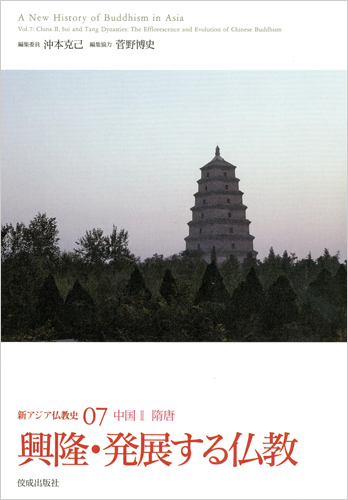KOSEI Publishing Co. Ltd. Bookmark
New History of Buddhism in Asia 07: China II - Buddhism Flourishes and Develops During the Sui and Tang Dynasties

Information will be available after you log in. Please create an account.
Rights Information
Other Special Conditions
Abstract
The Sui and Tang periods in China were a turning point, where Indian Buddhism, having come through the Silk Road, transformed into Chinese and experienced unprecedented development. It also presented the form of "sects" that we are familiar with today, such as Zen, Pure Land, Tiantai, Huayan, and Esoteric Buddhism. Through the relationships between the emperor-centric unified state and Buddhism, unique Chinese doctrines, and the faith spread among the populace, we reveal how Buddhism's prosperity was etched into the history of the great Chinese empire.
Author’s Information
Katsumi Okimoto
Born in Hyogo Prefecture in 1943. He dropped out of the doctoral program in the Graduate School of Humanities and Sciences (Indian Philosophy) at the University of Tokyo. He served as a lecturer, professor, and vice-president at Hanazono University and is now an emeritus professor at the same university. He holds a Doctorate in Literature. His works include "Mud and Lotus: Reading Zen Master Hakuin" (Daifaron Press) and "Zhaozhou: The Vivid Landscape of a Master Who Lived Zen Lightly" (Rinshosha).
| Series/Label | New History of Buddhism in Asia |
|---|---|
| Released Date | Jun 2010 |
| Price | ¥4,000 |
| Size | 148mm×210mm |
| Total Page Number | 512 pages |
| Color Page Number | --- |
| ISBN | 9784333024353 |
| Genre | Nonfiction / Humanities > Culture/Religion |
| Visualization experience | NO |




